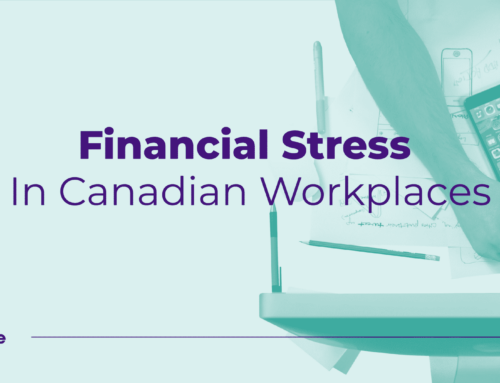Tapping Into the Gig Economy to Earn Money On the Side
While you may have a regular source of income, there are plenty of reasons why you might want a side job to make some extra income. After all, every dollar you earn could be put toward worthwhile expenses, such as paying off debt, taking a vacation, making a big purchase, saving for retirement, or saving for a down payment on a house.
If that’s your goal, you can join thousands of other Canadians and become part of the gig economy, which is made up of contractors, freelancers, and other workers who are looking for temporary jobs with more flexibility than full-time employment. So, whether you’re a delivery driver, consultant, handyman, programme,r or graphic designer, there are many ways of tapping into the gig economy to make money on the side.
Easy Ways On How You Can Earn Some Extra Money
As mentioned, the gig economy is where you can go to find temporary jobs as a freelancer, contractor, part-time worker, passive income collector. Many people prefer this option because it means they aren’t locked into a specific job position. However, some simply want to make a few extra dollars on top of their normal wage or salary.
Here are just a few of the professions that could be considered part of the gig economy:
- Painters and contractors
- Freelancers and web developers
- Dog sitters and walkers
- Babysitters and homecare Workers
- Drivers and bicycle/Scooter couriers
Since many Canadians need more than one job to cover all their housing and living costs, the gig economy can be an important way to help make some extra income. Luckily, there are now several ways of tapping into the gig economy using different websites and mobile apps, including but not limited to the services below.
Uber and Lyft
Over the last few years, Uber and Lyft have become two of the most popular and affordable alternatives to taxis and public transit for many Canadians. Essentially, either app will allow you to become a semi-professional rideshare driver using your own vehicle.
While many gig workers use these apps to shuttle passengers to their destinations, you can also use Uber or Lyft to make deliveries for various restaurants or suppliers. The customer pays by credit card in advance and you get a cut of the proceeds, as well as the opportunity to make tips. The perfect way to earn some extra money!
However, Uber and Lyft may not be the best methods of earning money on the side because these services aren’t available or permitted in every part of Canada. Plus, you’ll have to supply your own vehicle, which can’t be more than a few years old and must be in good condition so it’s considered completely safe on the road.
MobileXpression and Swagbucks
Believe it or not, there are companies that will actually pay you to participate in market research programs or download various apps.
For instance, MobileXpression is an app that monitors your internet habits and collects data for research purposes. All you have to do is download their app and you can start earning little by little. As a bonus incentive, you’ll get a $5 Amazon gift card just for installing the app on your Android or iPhone, along with other small benefits for every additional week that you keep it on your mobile device. Plus, after 3 months of usage, a tree will be donated to the Trees For Knowledge program in your name.
Swagbucks is another well-known marketing research platform. Here, you can make money by taking surveys, downloading other apps, doing web searches, watching videos, and even playing games. You get a $10 bonus for signing up and the chance to redeem a gift card from select retailers after you make your first dollar. As soon as you earn $20, you can start withdrawing your earnings in cash using PayPal.
All this said, unless you’re using your marketing research app frequently, you may not earn as much money as you would with other gig economy side hustles. Not to mention, not everyone is comfortable giving away information about their internet habits.
TaskRabbit
TaskRabbit is an app that allows clients to hire gig workers to perform different tasks, which can be almost anything, including but not restricted to:
- Fixing computers or other technology
- Assembling furniture or setting up appliances
- Moving items to various dwellings
- Writing and editing documents
- Doing yard work or home maintenance/repairs
Similar to apps like Uber and Lyft, some people use TaskRabbit because it offers more flexibility and variety when it comes to their working environment or hours. However, TaskRabbit takes the process a step further, in that you can use the platform to create, manage and add things to your personal profile, such as your skills and an hourly price.
Amazon Mechanical Turk
Otherwise known as MTurk, the Mechanical Turk is a crowdsourcing website owned by Amazon, which helps businesses to hire remote outside help for whatever tasks and small jobs that their computers cannot do automatically, like:
- Identifying video and image content
- Writing descriptions for products and services
- Answering emails or questions from customers and staff
- Programming and data processing
- Designing graphic art and building websites
Similar to apps like MobileXpression and Swagbucks, the only real problem with being a Turker is that the wages aren’t the greatest, at least not to begin with. You’ll need to perform several micro-jobs before you can earn more than $50 – $100 per month.
Airbnb
With the exception of unforeseen circumstances like COVID-19, Airbnb has been steadily rising in popularity since it was created back in 2008. In fact, it’s become one of the most widespread and profitable gig economy apps to date, allowing homeowners and apartment dwellers to rent their units out to various guests, namely travellers, to earn some extra money.
You may enjoy the convenience of Airbnb because it won’t distract you from your regular job or other gig work. All you have to do is explain the rules of your room or dwelling, leave the keys with your guest(s) and come back, later on, to tidy up. You set your own rental prices, cleaning fees and damage deposit amount. If you’re a gracious host, you can even show your guest(s) around town and earn tips like a tour guide.
All this said, there are a few problems with being an Airbnb host. Firstly, you may have to deal with irresponsible guests who cause damage or leave your unit dirty. In addition, home-sharing is illegal in certain areas because it can reduce the number of houses on the market for residents to purchase. In some jurisdictions, you have to live on the property in order to rent it out. On top of that, there are fewer tax benefits than other kinds of gig work.
Earn Money Freelancing
If you’re less open to the idea of driving professionally, participating in market research or renting out your room/dwelling, you can stick along the same lines as TaskRabbit and MTurk by going freelance. As a freelancer, you can provide services based on your skills and get hired to do almost any sort of job out there. That said, many gig workers are now using freelancing as a way to break into the online economy with websites like:
- Fiverr – While it was used mostly by freelance writers in the past, the Israeli website Fiverr has been around so long that clients can now offer and pay for all kinds of creative work, such as music and art. Like other freelance platforms, you can set your own service prices (starting at $5) to earn some extra money.
- Upwork – Depending on your level of skill, Upwork can help you rake in a decent hourly or per-word wage with computer-based jobs like writing, web or app development, and graphic design. However, if you’re new to the world of freelancing, it can take a while to work your way up to earning a real living.
- com – Just like Upwork, you can use Freelancer.com to get creative computer-based jobs, such as sound and video editing, website building, and social media management. Many top tier companies, like Amazon, Deloitte, Facebook, and NASA use this platform to hire freelancers at varied prices.
Etsy and Shopify
Instead of doing traditional freelance or contract work, e-commerce platforms like Etsy and Shopify can permit you to set up your own retail business by selling and marketing different items online. You can either sell your own custom-made items or sign up with an existing retailer to market and ship virtual products at no cost to yourself while earning some extra money.
Unlike other forms of gig economy platforms, you’ll have to pay service fees to market your products and make transactions on Shopify or Etsy. You may also be charged if your business makes sales from any offsite advertisements that appear on your retail page (normally paid for by the platform in question).
TURO
Available in Canada and the United States, you can use TURO to rent out your car for extended periods of time. Like Airbnb, this gig platform caters mostly to travellers and can be a decent way of earning some passive money on the side, since there is little work involved. Plus, it doesn’t cost anything to advertise your vehicle. The renter may even be responsible for covering up to 90% of any fees you incur during the rental process.
Of course, the biggest drawback to renting out your car is that it could accumulate more wear n’ tear than it would if you were the only one driving it. Not to mention, a renter could get in an accident, be involved in a traffic incident or leave the car full of garbage. If you’re willing to accept these risks, you can make up to $6,500 a year with TURO.
Written by Loans Canada | Contributor to Marble Financial






